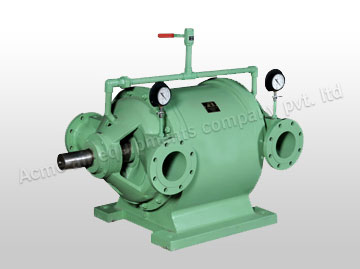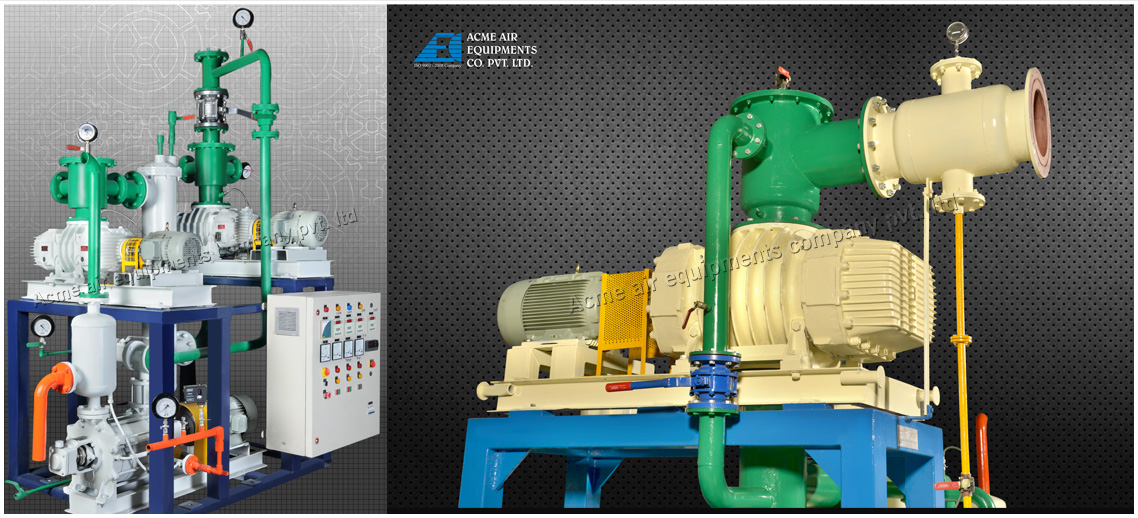Table of Contents
A vacuum pump is a mechanical device that draws gas molecules from a volume that is sealed. The pump then leaves a partial vacuum behind. Its primary job is to create a relative vacuum in a volume of a specified capacity. There are several types of vacuum pumps, and each one has its own advantages and disadvantages. To understand their differences and the benefits and limitations of each type, this article will cover the principles of vacuum pumps, costs, and installation.
Principles of Operation of Vacuum Pumps
The main components of a vacuum pump are its rotor, stator, and motor. The rotor and stator coils produce a magnetic field when excited. The pump must be supported on a base. Oil is also circulated in the vacuum pump system for lubrication and cooling. The speed at which the pump pumps fluid depends on the rate at which it can evacuate the gas. The higher the speed, the larger the vacuum.
In addition to entrapment, a vacuum pump can be either gas transfer or positive displacement. The former retains gas molecules in the chamber. The latter can be cryo, ion, diffusion, turbomolecular, or negative displacement. Vacuum pumps can also be single-phase or three-phase. Single-phase pumps are used in most applications, while larger systems require three-phase pumps. Here are some common types and descriptions.
Types of Vacuum Pumps
The different types of vacuum pumps can be classified according to their purposes. Some are designed to create a partial vacuum, such as in dehydration and feeding. Others are entrapment vacuum pumps, which capture gas molecules by various principles. Let’s look at some of the main uses of vacuum pumps. In oil re-refining, for example, oil pumps are used to remove air from the fuel. Then, there are those used for recycling petroleum.
Comparison of Vacuum Pump Technologies
Different vacuum pump technologies are available, each suited to specific applications. Below is a comparison of the most common types:
|
Type |
Operating Principle |
Advantages |
Limitations |
|
Liquid Ring Pumps |
Use a rotating ring of liquid to compress gases. |
Handles moist or corrosive gases, low maintenance. |
Requires water supply, less efficient for dry gases. |
|
Rotary Vane Pumps |
Utilize rotating blades to trap and compress gas. |
Compact, cost-effective, suitable for low vacuum. |
Oil contamination possible, limited for high vacuums. |
|
Diaphragm Pumps |
Use a flexible diaphragm for gas compression. |
Oil-free, ideal for clean and dry applications. |
Limited flow rate, less efficient for large volumes. |
|
Turbomolecular Pumps |
Transfer gas molecules using high-speed rotating blades. |
Ultra-high vacuum, contamination-free operation. |
High cost, sensitive to vibrations and particles. |

Vacuum pumps are commonly used in many industrial and scientific processes. Their common industrial uses include semiconductor processing, thin-film coating, vacuum tubes, radio pharmacy, and furnaces. These devices are also commonly used for gas recovery and cabinet fabrication. Moreover, they are suited for vacuuming large-volume liquids and gases. They are also used in flight instruments, vacuum tubes, electric lamps, and other applications requiring suction.

Cost of Vacuum Pumps
There are several factors to consider when determining the cost of a vacuum pump. First, the type of vacuum pump you need is important. There are several different types of vacuum pumps, including diaphragm and scroll types. The type of vacuum pump you need will depend on the type of chemicals you plan to use and their concentrations. Next, you must choose the right model and size to fit your needs.
Energy Efficiency and Maintenance Tips of Vacuum Pumps
Energy Efficiency in Vacuum Pumps
Energy consumption can be a significant operational cost for vacuum pumps. Here are ways to improve efficiency:
- Use Variable Speed Drives (VSD): Adjust pump speed to match demand, reducing unnecessary energy use.
- Optimize System Design: Minimize piping length and ensure proper sealing to reduce energy losses.
- Choose Energy-Efficient Models: Modern pumps are designed to consume less power without compromising performance.
Best Practices for Vacuum Pump Maintenance
Regular maintenance is essential for ensuring peak performance and extending the life of vacuum pumps. Follow these tips:
- Seal Integrity: Check for leaks regularly to maintain consistent vacuum levels.
- Lubrication Levels: Ensure oil levels are adequate for pumps requiring lubrication.
- Calibration of Components: Periodically calibrate rotors, valves, and other critical parts.
Proactive energy and maintenance management can significantly reduce operational costs and downtime.
Installation of Vacuum Pumps
The installation of a vacuum pump involves installing the pump’s pipe work. The pipe work should be installed on a flat surface and connected to the pump using bolts through the bottom corners. Next, the pipe joint should be taped, and then screwed onto the motor’s body above the check valve. The pipe joint and the direction of rotation around the pump are marked on the vacuum pump. Ensure that the pipe work is free from kinks. Afterwards, the pump must be opened to test its performance.
Upon arriving at the site, the pump should be thoroughly checked. Check for proper installation, rotation, and priming before start-up. This ensures proper performance and reduces the risk of troubleshooting. For example, improper installation can cause excessive noise. A poorly anchored pump can also result in excessive wear and tear. To ensure proper performance, the pump should be primed and checked for proper alignment. It should also have an air flow.
Common Challenges and Vacuum Pump Troubleshooting Tips
Vacuum pumps can encounter issues during operation. Identifying and addressing these challenges promptly ensures consistent performance.
Common Challenges
- Excessive Noise:
- Cause: Improper alignment, worn-out bearings, or loose parts.
- Solution: Check alignment, tighten components, and replace worn parts.
- Poor Vacuum Performance:
- Cause: Air leaks, clogged filters, or damaged seals.
- Solution: Inspect for leaks, clean or replace filters, and check seals.
- Overheating:
- Cause: Inadequate cooling or excessive workload.
- Solution: Ensure proper ventilation and reduce operating pressure if possible.
Vacuum Pump Troubleshooting Tips
- Perform regular system checks to identify issues early.
- Maintain a log of operational parameters to track deviations from normal performance.
- Consult the manufacturer’s guidelines for troubleshooting specific pump models.
Environmental Considerations
Environmental sustainability is a growing concern, and vacuum pumps are no exception. Here’s how the industry is addressing environmental impact:
- Eco-Friendly Designs:
- Dry vacuum pumps eliminate the need for oil, reducing waste and contamination.
- Low-emission models minimize the release of harmful gases.
- Energy-Efficient Pumps:
- Advanced designs consume less power, helping industries lower their carbon footprint.
- Recycling Programs:
- Many manufacturers now offer recycling services for worn-out components, reducing landfill waste.
By adopting these solutions, businesses can balance operational efficiency with environmental responsibility.
Future Trends in Vacuum Pump Technology
The vacuum pump industry is evolving rapidly, driven by technological advancements and changing market needs. Key trends include:
- IoT Integration:
- Smart pumps equipped with IoT sensors provide real-time data on performance, enabling predictive maintenance and reducing downtime.
- Oil-Free Technologies:
- Increasing demand for cleaner operations has led to innovations in oil-free and dry vacuum pumps.
- Compact and Modular Designs:
- Space-saving designs make it easier to integrate pumps into existing systems.
- Enhanced Noise Reduction:
- Advances in materials and engineering have resulted in quieter pumps, improving workplace conditions.
These trends highlight the industry’s commitment to innovation and sustainability.
Buying Guide: How to Select the Right Vacuum Pump
Selecting the right vacuum pump is crucial for achieving optimal performance. Consider the following factors when making a decision:
- Application Requirements:
- Identify the type of material to be handled and the vacuum level required.
- Budget and Operating Costs:
- Balance initial investment with long-term maintenance and energy costs.
- Space and Noise Constraints:
- Choose compact models for limited spaces and quieter pumps for noise-sensitive environments.
- After-Sales Support:
- Ensure the manufacturer provides reliable maintenance services and replacement parts.
By assessing these criteria, businesses can choose a pump that meets their specific needs while ensuring cost-effectiveness and reliability.
The Bottom Line
A vacuum pump is an apparatus that removes gases from a closed environment, partially forming a vacuum in the meantime. In these operations, the vacuum is created, enhanced, and maintained using an industrial vacuum pump. The quality and desired vacuum level should be taken into consideration as the most important aspects when selecting a vacuum pump. Equipment can be powered by a vacuum or helped by one. Vacuum pumps are among the most crucial, if not the most crucial, parts of vacuum furnaces. Our operations and level of quality are based on the way these technologies’ function.



